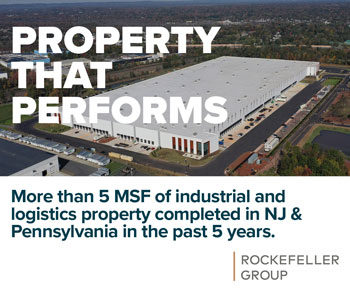By Joshua Burd
Tenant brokers with Savills Studley are touting an opportunity for office users in 2018, amid last year’s slowdown in leasing volume and growing availabilities in the state’s top submarkets.
In a recent market report, the tenant representation firm said “conditions continue to trend undeniably toward the tenant’s favor” in northern New Jersey. With the belief that demand for office space “appears to have peaked several quarters ago,” Savills Studley projected that users will have more space to choose from and the prospect of a rent plateau in high-end locations such as Short Hills, Metropark and the Hudson waterfront.
Notably, researchers with firm said deal volume in 2017 totaled less than 7 million square feet, well below the long-term average of 10.7 million square feet and a decrease of more than 40 percent from 2016. The report also noted that average asking rents ticked up only slightly year-over-year, to $28.95 from $28.78 per square foot.
“Tenants continue to capitalize on a variety of space options across the entire market,” said Chris Hanenberg, associate director in Savills Studley’s Rutherford office. “Locations that were very active in 2015 and 2016 — such as the Hudson Waterfront and Short Hills –— have become softer in 2017. This should create more opportunity for tenants (in 2018).”
The Q4 market report found that the overall availability rate in northern New Jersey fell to 22.8 percent from 23.3 percent in the third quarter, but pointed to a spike in the Hudson waterfront. The submarket registered a 370 basis point increase in availability from year-end 2016, the firm’s research team found, thanks to the addition of several large blocks of space.
Brokers have long said the waterfront is subject to large swings in vacancy that don’t necessarily reflect the health of the submarket, but Savills Studley also raised the prospect of rents stabilizing. Rents have pushed $50 per square foot for top buildings in Jersey City, but the tenant-only brokerage said landlords may have to work harder to maintain those levels.
“Concessions, particularly tenant improvement allowances, are also at record levels in Manhattan,” researchers wrote. “Landlords trying to lure tenants to move from Manhattan to New Jersey will have to make substantial capital improvements. If not, they will have to compete on price — the gap between nominal rent in Jersey City and Lower Manhattan has narrowed in the last year.”
Savills Studley also pointed to New Jersey’s new governor, Phil Murphy, noting that potential efforts to scale back the Grow New Jersey tax credit program for traditional office users could further weaken demand. Meantime, the firm said the number of larger tenants in the market has dropped off, finding that fewer than 10 leases larger than 100,000 square were completed in 2017, as opposed to more than 15 in both 2015 and 2016.









